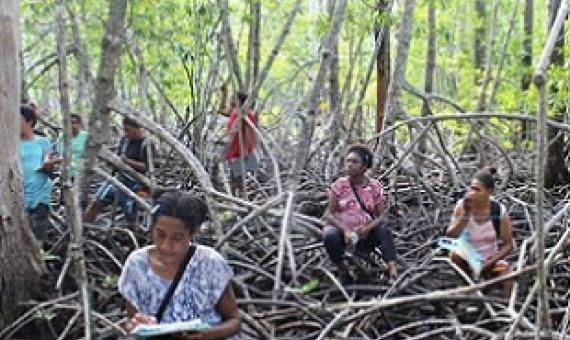State of Environment and Conservation in the Pacific Islands: 2020 Regional Report.
Pacific islands are hotspots of unique biodiversity. Our ancestral traditions are linked
to nature. However, these traditions, the natural environment, and biodiversity are
threatened by changing global and regional environmental pressures, ecological
degradation, growing human populations, changing demands of our societies, and the
impacts of climate change and sea level rise.Call Number: [EL],333.720961 STAISBN/ISSN: 978-982-04-0905-7,978-982-04-0906-4Physical Description: 156 p. 29 cm.







